Poultry farming is a thriving industry that provides a sustainable protein-rich food source. Poultry farm design is the process of planning and creating an efficient layout for a poultry farm, considering various factors such as space utilization, biosecurity measures, ventilation systems, waste management, feeding and watering systems, and overall comfort and health of the poultry.
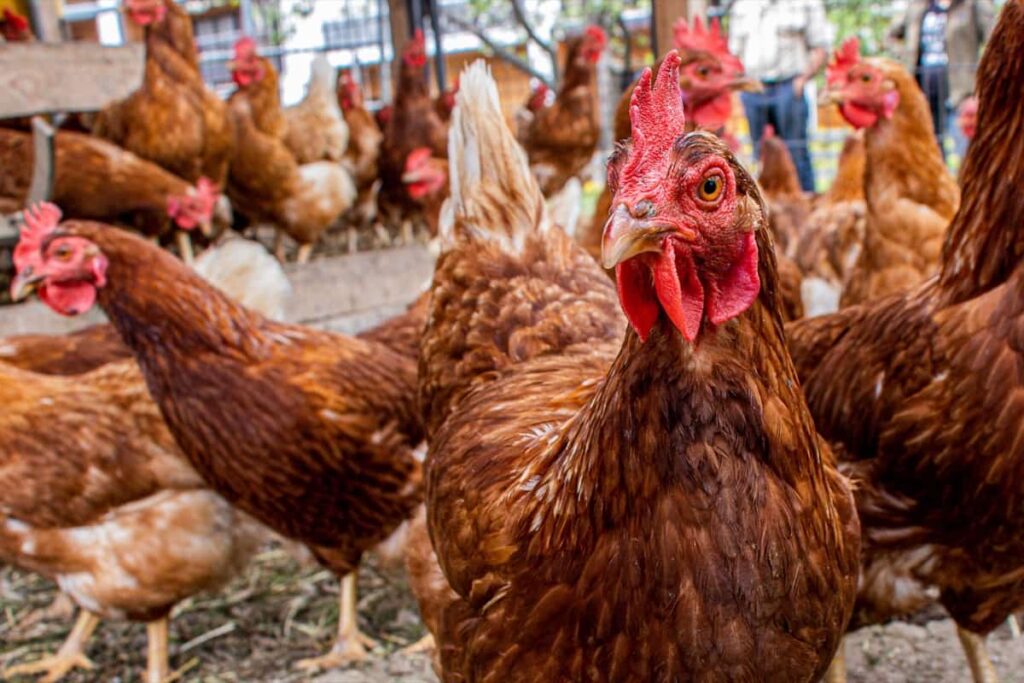
The importance of poultry farm design lies in its ability to optimize space, ensure proper ventilation and lighting, facilitate biosecurity measures, and create comfortable living conditions for the birds. A well-planned layout can streamline daily operations by minimizing labor requirements and optimizing resource utilization.
Factors to Consider in Poultry Farm Layout Planning
The size of the poultry farm needs to be taken into account. This includes the number of birds you plan to raise and the available land space. It’s important to ensure enough room for the housing structures and other necessary infrastructure, such as feed storage areas or processing facilities. Biosecurity involves implementing measures to prevent disease outbreaks and minimize risks. The layout should include separate zones for different age groups of birds and proper isolation and quarantine areas.
Ventilation and lighting systems are also essential considerations in poultry farm design. Good airflow helps maintain air quality and temperature control within the housing structures, while adequate lighting promotes healthy growth and productivity. The efficient utilization of natural resources is another important factor. Designing water collection systems or utilizing renewable energy sources can help reduce costs and minimize environmental impact.
Low-Cost Layout Plans for Poultry Farms
One option is the open-sided house design, which utilizes natural ventilation to reduce the need for expensive ventilation systems. By incorporating large openings or windows on opposite sides of the structure, fresh air can flow freely, keeping the birds comfortable and reducing energy costs. Another cost-effective plan for poultry farms is utilizing lightweight construction materials to build poultry housing structures.
These materials are not only affordable but also environmentally friendly. Adopting a multi-tiered cage system can be beneficial. This allows you to use vertical space optimistically without requiring additional land area. Furthermore, maximizing natural resources such as sunlight can significantly reduce energy consumption by utilizing natural lighting during daylight hours.
Maximizing Space Efficiency in Poultry Farm Design
Carefully plan the layout by considering the number of birds, type of housing structures, and required infrastructure. By strategically positioning different elements within the farm, you can minimize wasted space and create a functional and efficient working environment. Another approach is to utilize vertical space effectively. Consider using multi-tiered chicken cages or raised platforms for housing layers or broilers. This allows you to use unused overhead space while providing ample room for the birds to move around comfortably.
In case you missed it: Chicken Farming in India: Poultry Farming Cost, License, and Requirements to Start in India
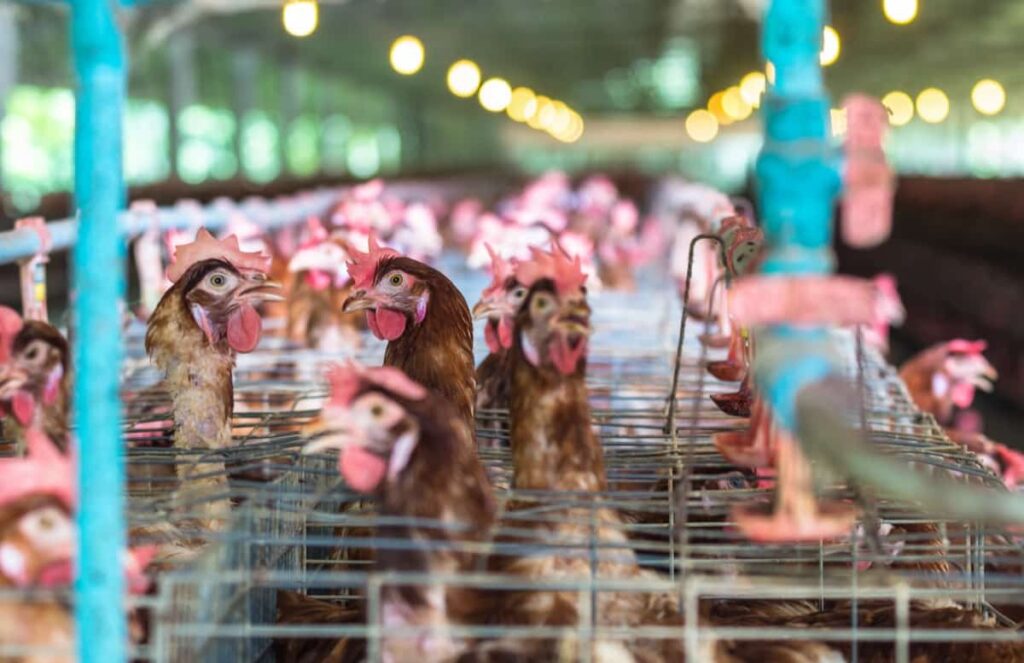
Additionally, implementing smart storage solutions plays a significant role in maximizing space efficiency. Utilize stackable crates or shelving units that accommodate equipment, supplies, and feed without occupying excessive floor area. Regular monitoring and evaluation are essential to identify areas where further optimization is possible. By continuously striving towards improving spatial organization within your poultry farm design, you can maximize productivity while minimizing unnecessary costs.
Optimal Placement of Poultry Housing Structures
The location of these structures should consider factors such as sunlight exposure, wind direction, and proximity to other facilities. It is important to position the poultry houses in a way that allows for maximum natural sunlight. This helps create a good environment for the birds by providing them with vitamin D and reducing moisture levels inside the houses. Placing the housing structures facing south or southeast can optimize sun exposure throughout the day.
Considering wind patterns is essential for maintaining proper ventilation within the poultry houses. Additionally, careful thought should be given to positioning poultry housing structures near other farm facilities, such as feed storage areas or processing units. By considering sunlight exposure, wind direction, and proximity to other facilities, farmers can create an efficient layout that promotes healthy living conditions for their flock while maximizing productivity on their farm.
Efficient Utilization of Natural Resources in Poultry Farming
By carefully planning the layout of poultry housing structures, farmers can make efficient use of available space. This includes considering factors such as sunlight exposure, wind direction, and access to water sources. Water is another valuable resource that should be used wisely in poultry farming. Implementing water-saving techniques like drip irrigation systems or reusing wastewater for cleaning purposes can help reduce overall water consumption on the farm.
Energy efficiency is also a key consideration when utilizing natural resources effectively. Installing solar panels or using energy-efficient lighting systems can significantly reduce electricity costs while minimizing environmental impact. By adopting sustainable practices like composting manure or using it as fertilizer for crops, farmers can also close the nutrient loop on their farms and reduce reliance on artificial fertilizers.
Designing Functional and Practical Poultry Farm Infrastructure
It involves creating a layout that allows for easy movement of both workers and birds, as well as efficient management of resources. Housing structures should be strategically located to optimize access to sunlight, ventilation, and water sources. Also, pathways should be designed to minimize congestion and allow easy movement between farm areas.
In case you missed it: Poultry Farming in Thailand: Breeds, Techniques, and License to Start
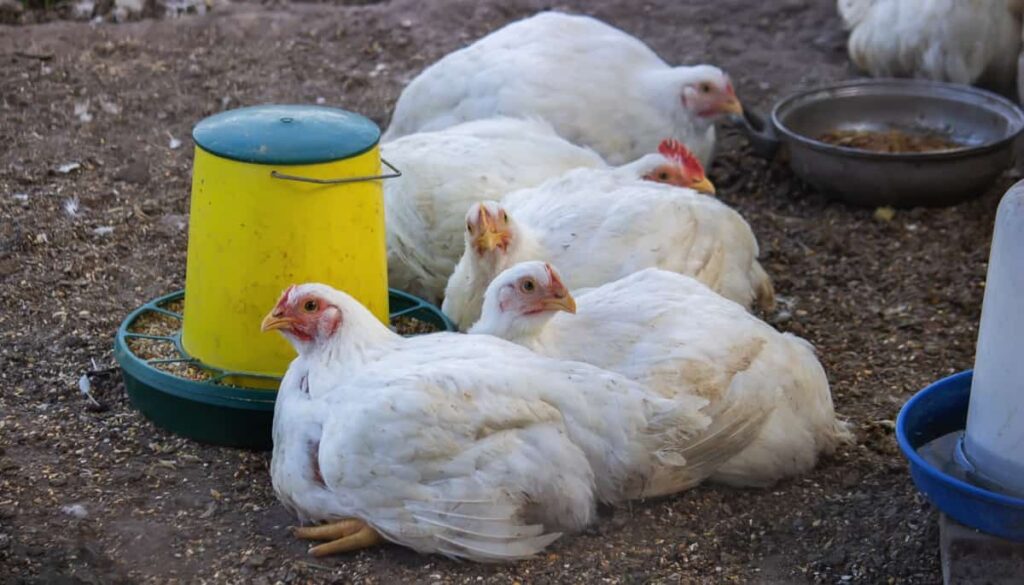
Designing proper waste disposal systems ensures that manure and other waste products are safely removed from the production area. This not only promotes hygiene but also prevents disease outbreaks among the flock. In terms of functionality, it’s crucial to incorporate features such as feeding and watering systems that are easily accessible for workers and birds. Properly designed feeders help minimize spillage and wastage while ensuring all birds have equal access to food.
Integrating sustainable practices into poultry farm design can yield long-term benefits. Renewable energy sources like solar panels or rainwater harvesting systems can reduce operating costs while minimizing environmental impact.
Implementing Biosecurity Measures in Poultry Farm Design
One important biosecurity measure is controlling access to the poultry farm. Limiting entry to only essential personnel reduces the risk of potential disease transmission. Another key consideration is separating different production zones within the farm. This helps prevent cross-contamination between flocks or age groups by creating physical barriers or maintaining strict protocols for movement between areas.
Regular cleaning and disinfection routines should be established to maintain a clean environment free from pathogens that could harm your flock. This includes thoroughly cleaning equipment, housing structures, feeders, waterers, and other surfaces regularly exposed to birds or their waste. Additionally, implementing vaccination programs based on veterinary recommendations can greatly contribute to preventing disease outbreaks on your poultry farm.
Incorporating Ventilation and Lighting Systems in Poultry Housing
Ventilation systems help to regulate air quality, temperature, and humidity inside the poultry housing structures. On the other hand, appropriate lighting ensures that birds have access to a consistent day-night cycle, which is essential for their growth and development. When incorporating ventilation systems in poultry housing, it is important to consider factors such as airflow rate, air distribution, and fan placement. Natural ventilation methods like windows or vents can be supplemented with fans or exhaust systems for optimal airflow.
In case you missed it: Month-Wise Poultry Farm Operations Maintenance and Management For Better Profits
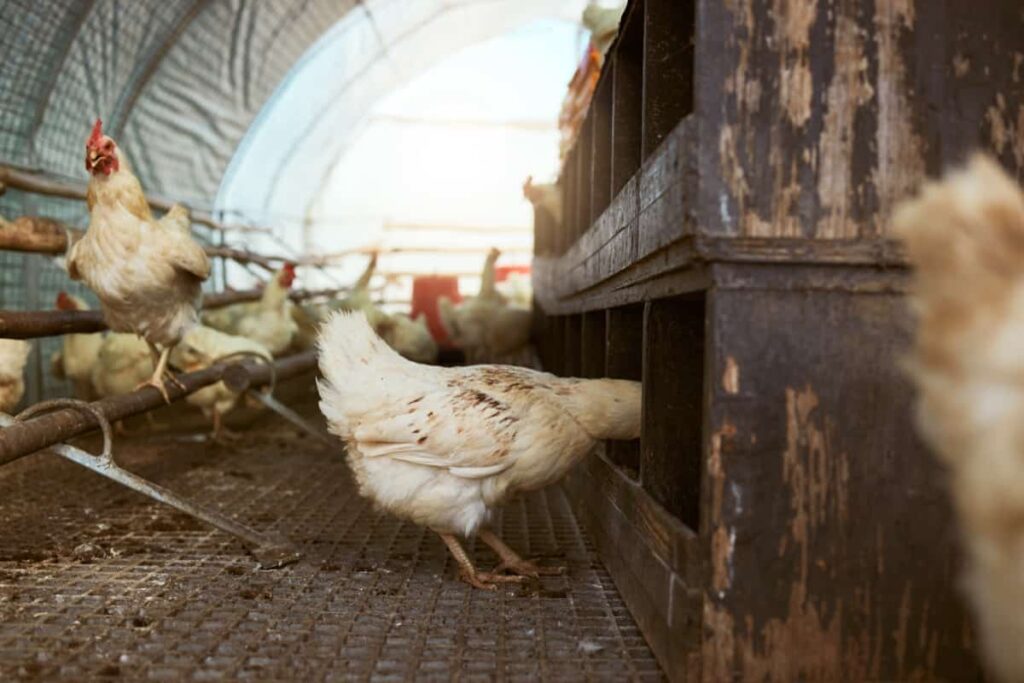
Regarding lighting systems in poultry farms, natural light is beneficial but may not always be sufficient. Artificial lighting allows farmers to control photoperiods during different stages of bird growth or when specific production goals need to be met. Energy-efficient LED lights are commonly used due to their long lifespan and adjustable brightness levels.
Ensuring Proper Waste Management in Poultry Farms
One effective method of waste management in poultry farms is through composting. Composting allows organic waste, such as manure and bedding materials, to decompose naturally and transform into nutrient-rich fertilizer. This can improve farm soil fertility or be sold as a valuable byproduct. Another approach is utilizing anaerobic digestion systems, which convert organic waste into biogas and biofertilizers.
In addition to these methods, it’s important to implement proper storage facilities for waste materials. This prevents contamination of surrounding areas and reduces odor emissions. Regular cleaning schedules should also be established to ensure cleanliness within the poultry housing structures. Furthermore, incorporating preventive measures like separating solid and liquid wastes helps streamline waste management.
Designing Effective Feeding and Watering Systems for Poultry
Poultry birds require constant clean water and balanced nutrition for optimal growth. When designing the feeding system in a poultry farm, it’s important to consider the type of feed used, such as pellets or crumbles, and choose appropriate feeders accordingly. Automatic feeders are commonly used in large-scale poultry farms, as they can dispense precise amounts of feed at regular intervals.
Watering systems should provide easy access to clean water throughout the day. Nipple or bell drinkers are common options that prevent wastage and contamination of water. These systems should accommodate the number of birds in each housing unit. Inspecting and maintaining these systems to ensure proper functioning regularly is essential. Feeders should be cleaned periodically to avoid mold or bacterial growth that could harm the birds’ health. Water sources must also be monitored for cleanliness.
Creating Comfortable and Healthy Living Conditions for Poultry
Providing adequate space for the birds is essential. Overcrowding can lead to stress and increased risk of disease transmission. Birds should have enough room to move freely without feeling cramped or restricted. Maintaining optimal temperature levels is also vital. Poultry are sensitive to extreme temperatures and can suffer from heat stress or cold-related issues if not properly managed. Adequate insulation and ventilation systems should be installed to regulate temperature effectively throughout the year.
Proper lighting plays an important role in maintaining bird health as well. Natural light helps stimulate natural behavior patterns such as feeding and resting cycles. Supplemental lighting can be used during darker months to ensure consistent egg production. Regular cleaning protocols must be implemented to maintain hygiene standards within the poultry farm. This includes promptly removing waste materials, disinfecting surfaces regularly, and providing clean bedding for nesting areas.
In case you missed it: Sustainable Poultry Farming: Benefits and How to Reduce Your Carbon Footprint with Chickens
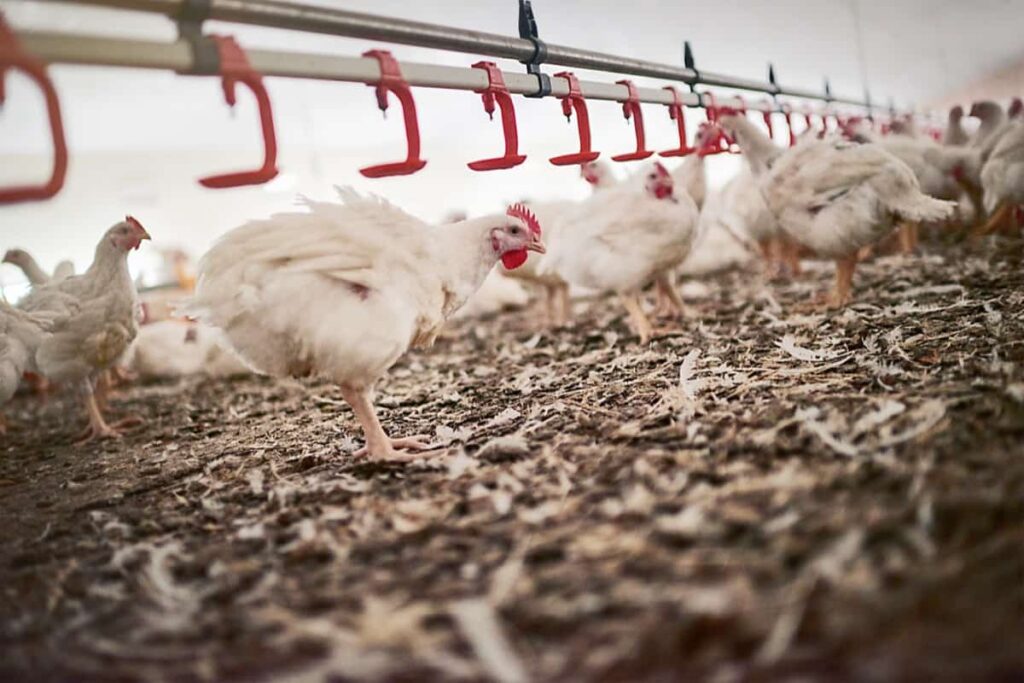
Integrating Sustainable Practices into Poultry Farm Design
One way to achieve this is by implementing energy-efficient systems within the farm infrastructure. This can include using solar panels to generate electricity or heat water for the poultry houses. Farmers can significantly reduce their carbon footprint by harnessing renewable energy sources while saving on long-term energy costs.
Another important aspect of sustainability in poultry farming is waste management. Implementing innovative technologies such as anaerobic digesters can help convert manure into biogas, which can be used as an alternative fuel source or fertilizer. Water conservation should also be prioritized in poultry farm design.
Installing water-saving devices like automatic drinkers and drip irrigation systems can minimize water wastage while ensuring that birds can always access clean and fresh water. Furthermore, incorporating natural ventilation systems and optimizing building orientations can enhance air quality inside poultry houses while reducing reliance on artificial cooling or heating methods.
Incorporating Safety Measures in Poultry Farm Infrastructure
One important aspect of poultry farm safety is proper ventilation. Ensuring adequate air circulation helps reduce the risk of respiratory diseases among the birds and maintains a comfortable working environment for employees. Another key consideration is fire prevention. Installing fire extinguishers at strategic locations throughout the farm can help control any outbreaks quickly before they spread and cause significant damage.
Proper lighting is also essential for enhancing safety on a poultry farm. Well-lit areas not only promote visibility but also contribute to preventing slips, trips, and falls that could result in injuries. Additionally, implementing biosecurity protocols is vital in safeguarding human health and bird welfare.
This includes strict hygiene practices such as regular cleaning and disinfection routines, restricting access to unauthorized individuals or animals, and ensuring proper waste management. Regular equipment and structure maintenance is equally important to ensure their safe operation. Routine inspections should be conducted to identify any potential hazards or structural weaknesses that may compromise safety.
Cost-Effective Maintenance and Upkeep of Poultry Farm Facilities
Regular maintenance ensures equipment longevity and helps prevent potential breakdowns and costly repairs. One important aspect of the cost-effective maintenance of poultry farms is regular inspections. By conducting routine checks on equipment such as feeders, drinkers, lighting systems, ventilation systems, and heating devices, farmers can identify any issues or abnormalities early on.
This allows them to take immediate action before a small problem escalates into a major one. Regularly cleaning and sanitizing poultry housing structures helps prevent disease outbreaks and maintains a healthy living environment for the birds. Lubricating moving machinery parts reduces friction, extends lifespan, and prevents expensive repairs.
Another cost-saving measure is training staff members in basic repair skills. Empowering employees with knowledge about troubleshooting common problems can significantly reduce the need to hire external technicians for minor repairs. Furthermore, investing in quality equipment from trusted suppliers can save money in the long run.
In case you missed it: Chicken Farming in Indonesia: Poultry Business Plan, Setup Cost, License, Profit, and Requirements
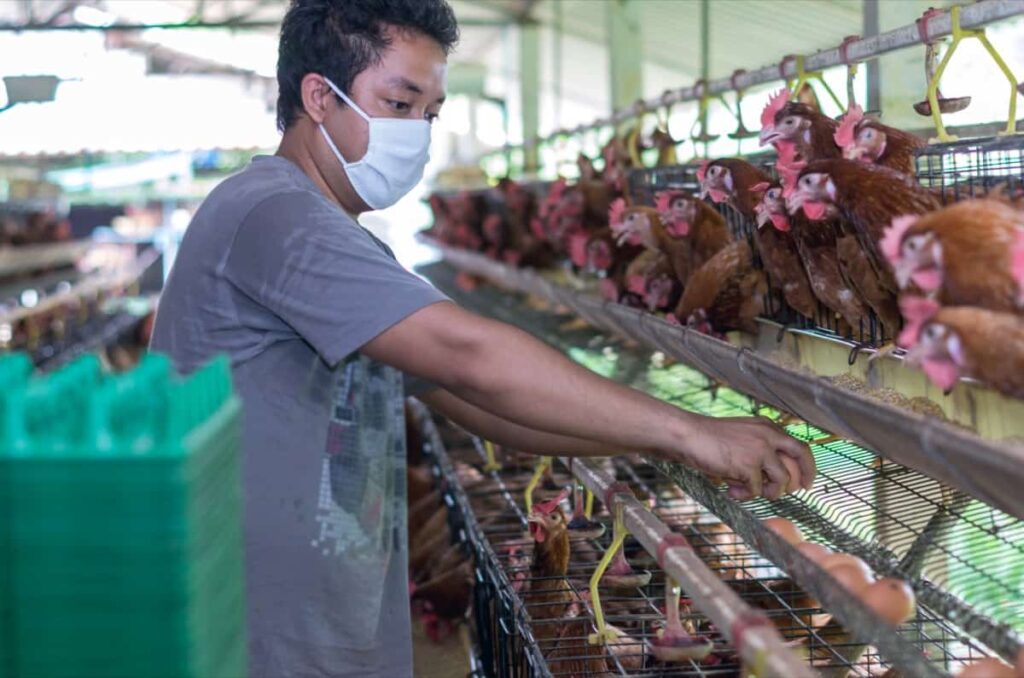
Required Poultry Farming Equipment
| Different Poultry Farm Equipment | Uses |
| Incubators | Hatching eggs, controlled conditions for eggs to hatch successfully |
| Brooders | Providing warmth to baby chickens, providing heat and electricity to the baby chickens |
| Chicken Cages | Provide housing for your birds; cages not only provide security but also help maximize space efficiency within your poultry farm layout |
| Feeders | Providing food, birds have access to food at all times |
| Drinkers | Supplying water to maintain proper hygiene standards |
| Fencing | Protect your poultry farm from predators, providing boundaries for free-range areas |
Poultry Farm Design Layout Plans and Required Poultry Farming Equipment
| Design Component | Description |
| Space Requirement for Broiler Chickens | 1-1.5 sq ft/bird (brooding period); 2-2.5 sq ft/bird (growing period) |
| Space Requirement for Layer Chickens | 2-3 sq ft/bird (cage system); 4-5 sq ft/bird (deep litter system) |
| Ventilation | Proper air exchange to remove moisture, reduce ammonia, and bring in fresh air; can be natural or mechanized |
| Temperature Control | Brooding: 32°C-35°C initially, decrease 2-3°C weekly; Layers: 20°C-24°C |
| Lighting | Broilers: 18-20 hours/day initially, reduce as they age; Layers: 14-16 hours of light/day for optimum egg production |
| Feeders & Drinkers | Ensure ample space for all birds to access feed and water; prevent contamination of feed and water |
| Litter Management | One box for every 4-to 5 hens; ensures safe and clean egg production |
| Nesting Boxes (Layers) | One box for every 4-5 hens; ensures safe and clean egg production |
| Perches (Layers) | Allow hens to roost at night; reduce stress and promote natural behavior |
| Waste Management | Proper waste disposal system; consider composting or biogas generation from waste |
| Biosecurity Measures | Control points for entry/exit, footbaths, proper disinfection, isolation of sick birds |
| Water Supply & Quality | Continuous supply of clean water; filtration systems might be needed |
Conclusion
The design of a poultry farm plays a crucial role in determining its success. A well-planned layout ensures optimal use of available space and resources, leading to increased efficiency and profitability. It also helps in preventing disease outbreaks by implementing proper biosecurity measures. Every successful poultry farm starts with a well-designed layout. Poultry farm design is more than just arranging structures and equipment; it plays a crucial role in the overall efficiency and profitability of the operation.
- Broccoli Varieties: Choosing the Right Cultivars for Your Farm
- How to Raise Pigs in Your Own Backyard: A Comprehensive Guide
- Budget Friendly Sheep Shed Ideas: Cheap and Low-Cost Tips
- How Much Do Cattle Farmers Make: Revenue Streams in Cattle Farming
- Management Pests and Diseases in Your Cotton Field
- Sheep Farming Business Plan for Beginners
- Aquaponic Farming at Home: A Step-By-Step Guide
- Profitable Village Farming Business Ideas in 2024
- High-Yield Aquaculture: Fast-Growing Fish for Farming
- Effective Fish Pond Construction Techniques for Beginners
- Irrigation and Water Management in Pineapple Farming
- Blossom to Harvest: Mastering Flowering and Pollination in Papaya Farming
- Pig Fattening Essentials: From Selection to Sale for Beginners
- Raising Wagyu Cattle: A Complete Guide for Premium Beef Production
- Soil Types and Their Water Holding Capacity
- Optimizing Irrigation Schedules for Coconut Groves for Enhanced Yield
- Espresso Your Garden: Coffee Grounds for Healthier Acid-Loving Plants
- The Best Soil Mix for Snake Plants: How to Mix Your Own Snake Plant Soil
- Green Thumb Success: Expert Tips for Cultivating Greenhouse Beans All Year Round
- Bloom All Year Round: The Ultimate Guide to Indoor Hyacinth Care
- Eco-Friendly Gardening: How to Make Liquid Fertilizer from Kitchen Waste
- Ultimate Guide to Grow Anise in Pots: Explore Seed Propagation to Harvesting
- Guide to Raising Chester White Pigs: Discover Breed Facts to Growth Management
- Mastering the Elegance: The Ultimate Guide to Weeping Cherry Tree Care, Planting, and Maintenance
- Ultimate Guide to Planting Garlic in Grow Bags: Growing Strategies for Beginners
- How to Fix Spider Plant Leaf-Related Problems: Natural and Organic Remedies
- 10 Reasons Why Your Tulsi Plant is Shedding Leaves: Home Remedies and Solutions
- Optimizing Growth and Yield: The Advantages of Palm Bunch Ash Fertilizer
- Utilizing Neem Oil Extract as a Natural Pesticide for Hydrangea
- From Soil to Harvest: Various Ways in Which Farmers Can Use AI Tools
- Steps to Encourage and Induce Citrus Flowers: A Comprehensive Guide
- How to Fix Snake Plant Leaf-Related Issues: Natural and Organic Remedies
- Transform Your Garden into a Fragrant Oasis with Raat Ki Rani (Night Blooming Jasmine)
- Discover the Ideal Chicken Breeds for Philippine Farms
- How to Create a Poultry Egg Farm Business Plan for Profits
- Grow Lemon Cucumbers Like a Pro: Insider Techniques for Bountiful Yields
